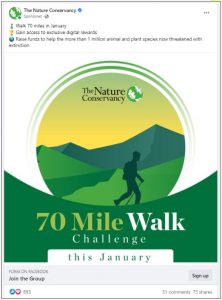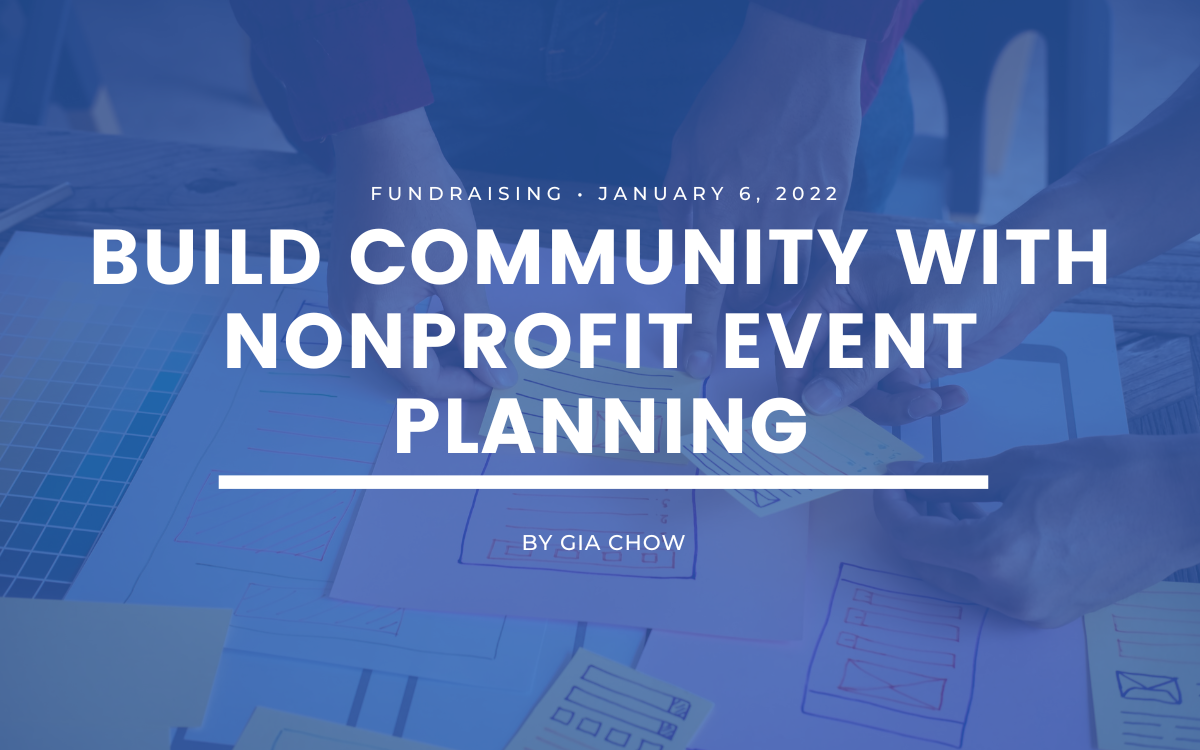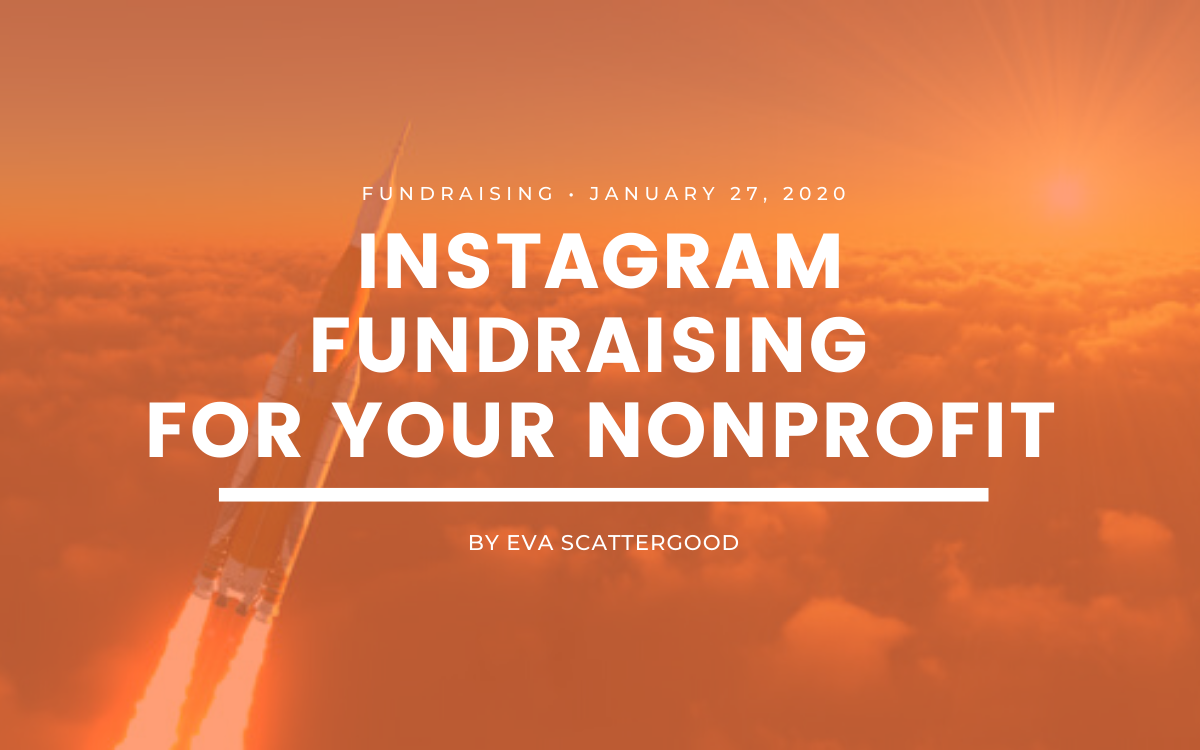Build Community with Nonprofit Event Planning
4.6 min to read ✭
You probably know all about how important nonprofit event planning can be. A well-executed nonprofit event is more than just a revenue generator – it’s also a means to build community by bringing your supporters together and having them actively engage with your organization as opposed to just contributing financially.
From galas, auctions, golf tournaments, and more, nonprofit event planning take time, effort, and resources. It doesn’t happen overnight. That said, we’ll walk you through how to plan an unforgettable nonprofit event and why a virtual format might make the most sense for your organization.
How to Plan A Nonprofit Event

Although an event can take many forms, here are ten universal best practices to get the ball rolling.
1. Determine your goals
The first step to planning any nonprofit event is to determine your goals. Is the primary objective to raise funds for a specific initiative? Are you trying to increase visibility for your cause? Perhaps you want to strengthen inroads with the community you serve? Your goals will look different based on your mission and who your supporters are. Knowing what your goals are will inform the rest of your nonprofit event planning strategy and help measure success.
2. Establish a budget
Next, you’ll need to figure out a budget for your event. Expect to invest organizational dollars to make it happen. To make sure you’re covering your overhead, iron out a detailed budget before you start spending. Consider lining up sponsorships to help defray costs. Big ticket event items typically include entertainment, venue, catering, decor, door prizes, and silent auction items (if you’re hosting one). As always, it never hurts to add a buffer in your budget for unforeseen expenses.
3. Assemble your team
There are a lot of moving pieces when it comes to nonprofit event planning. Rather than planning an event in a vacuum, gather a committee to help handle the logistics. Your committee can include staff, volunteers, and board members. Ensure that everyone is on the same page and has a delegated role. After all, teamwork makes the dream work.
4. Solidify your timeline
To avoid last-minute scrambling, set a timeline and stick to it. Outline the steps you and your team need to take in the months, weeks, and days leading up to your event. To give yourself and your team ample time, we recommend planning four to six months in advance.
5. Identify your audience
Different types of events attract different crowds so it’s important to identify your ideal target attendees (i.e. Is it going to be a fancy fundraiser for donors? Are you celebrating your volunteers?). Decide whether you want to open your event up to the public or if it’ll be geared towards a specific segment of supporters. The activities you have planned will hinge on your audience.
6. Choose the event type
From galas to viral challenges, nonprofit events come in all shapes and sizes. Depending on your budget and goals, there are plenty of options that’ll meet that need. How would you like your attendees to get involved? What will the format of your event be? Will it be virtual, in-person, or a hybrid of both? Is the attire black-tie or casual? Additionally, determine if your event will be free or if there’s a price for attendance.
7. Set a date and time
Before you can start promoting your event, you’ll need to know exactly when it’s going to happen. Set a date and time that’s far enough in advance to finalize plans. Be sure that the date you choose doesn’t conflict with major holidays or other local events that are happening. Be mindful of your attendee’s availability. For example, if your event is held on a weeknight, people may be less likely to stay late especially if they have work in the morning or it’s a school night.
8. Create a marketing plan
Now that you’ve nailed down a date and time, you’ll need a marketing strategy to get the word out. Cover your bases by using a multi-channel marketing approach. Use what you know about your audience’s communication preferences and focus your efforts on those. Your time and resources are limited so don’t waste them crafting ads that won’t reach your constituents.
9. Enjoy your event
The big day is here! To avoid any hiccups, do a dress rehearsal with your team and any key presenters. In addition to running through the agenda, double-check sound, lighting, and technical equipment.
10. Follow up with your attendees
After your event, be sure to thank everyone involved (guests, staff, sponsors, etc.). Ask for feedback to see what went well, and what could be improved, and debrief with your planning committee. Not only will you be able to get a better idea of your event’s successes and failures, you’ll be able to use this feedback to inform your future nonprofit event planning strategy.
Why Plan A Nonprofit Virtual Event?
Covid threw a wrench in even the best-laid nonprofit event plans. Luckily, nonprofits adapted by shifting to virtual events. Although in-person events are slowly making a comeback, it looks like virtual events are here to stay.
Compared to live, in-person gatherings, virtual events are less labor-intensive and cheaper to pull off. With virtual events, you don’t have to worry about accommodations, travel, or booking a venue. Your guests are able to attend from anywhere in the world, making them much more accessible and convenient.
How to Market Your Nonprofit Virtual Event
When it comes to nonprofit event planning, having a solid digital marketing plan is key to success. You don’t want to fly by the seat of your pants on this one. Most nonprofit events fail because they don’t get enough traction.
Here are a few proven digital channels that will help you get the word out:
Market Your Event On Social Media
Social media is an excellent place to share and ramp up the excitement. Be sure to post frequently about your event across all social platforms by peppering in with your regular content. Automate your posts by scheduling them out ahead of time. Use paid Meta and Instagram ads to get the word out. With Facebook Ads Manager, you can track your marketing success and see how many people your posts have reached. You can also target your audience based on their location, interests, and more. Grab your audience’s attention with a catchy hashtag and include a link for people to register.

Market Your Event Via Email
Of all digital marketing channels, email marketing has the highest ROI. This is an audience that has already given you consent to contact them. Segment your email lists and create personalized and engaging content about your event. Include a call to action that links to your event or registration page.
Market Your On Your Website
Don’t forget to promote via your website. As a central place to send web traffic, create a dedicated event landing page that includes a description and any relevant details. This is where you’ll list your sponsors, add photos, provide past attendee testimonials, and link registration information.





